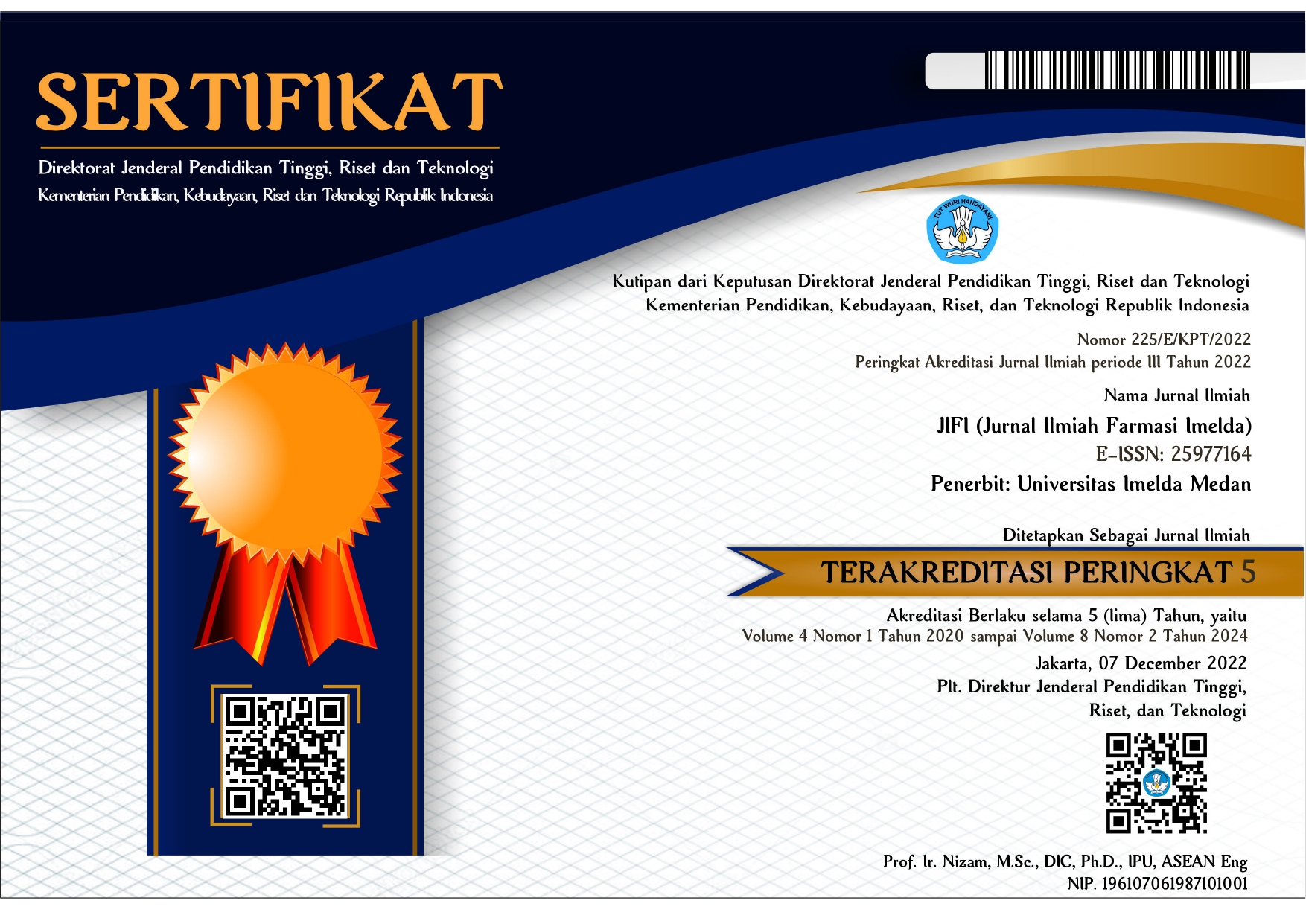ANALISIS PENGETAHUAN MAHASISWA TENTANG LOGO PADA KEMASAN OBAT GOLONGAN TRADISIONAL DI UNIVERSITAS IMELDA MEDAN
DOI:
https://doi.org/10.52943/jifarmasi.v5i2.774Keywords:
Knowledge, Logo, Herbal Medicine, Herbal, PhytopharmacaAbstract
In Indonesia, traditional medicines are grouped into three types, namely traditional medicines (herbs, imported traditional medicines, licensed traditional medicines), standardized herbal medicines (OHT) and phyto-pharmacy. There are three types of logos with their respective criteria for grouping traditional medicines or natural medicines from Indonesia. The three kinds of traditional medicine logos are the herbal medicine logo, the OHT logo and the fitofarmaka logo. The purpose of this study was to determine the level of knowledge of Imelda University students about the logo on the packaging of traditional medicines. This research is a descriptive survey research and is cross-sectional in nature, namely research that aims to describe the phenomena found at one time and once, both in the form of risk factors and effects or outcomes. Pharmacy students have good knowledge of 84.6% compared to non-pharmaceutical students who have good knowledge of 34.6% about logos on traditional medicine packaging. This is because students in the pharmaceutical field better understand and learn things related to health sciences including information about logos on traditional medicine packaging. Based on research data, it can be concluded that the origin of the study program affects the level of knowledge of the respondents (students), while age, gender, and place of origin did not affect the level of knowledge of the respondents.
References
BPOM. (2014). Persyaratan Mutu Obat Tradisional. Jakarta: Badan Pengawas Obat dan Makanan.
Cristiana, E. (2014). Hubungan antara pengetahuan dan sikap mengenai obat tradisional dan obat modern terhadap tindakan pemilihan obat pada pengobatan mandiri di kalangan mahasiswa Universitas Sanata Dharma Yogyakarta. Repository Universitas Sanata Dharma. http://repository.usd.ac.id/18140/2/108114144_full.pdf
Hastono, S. . (2006). Analisis Data. Jakarta: Fakultas Kesehatan Masyarakat Universitas Indonesia.
Oka, I. (2016). Obat Tradisional. Bali: Laboratorium Kimia Organik Universitas Udayana.
Pandean, F., Tjitrosantoso, H., & Goenawi, L. R. (2013). Profil Pengetahuan Masyarakat Kota Manado Mengenai Antibiotika Amoksisilin. Pharmacon, 2(2). https://doi.org/https://doi.org/10.35799/pha.2.2013.1690
Parwata, I. M. O. . (2017). Obat Tradisional: Buku Ajar. Bali: Laboratorium Kimia Organik, Fakultas Matematika dan Ilmu Pengetahuan Alam Universitas Udayana.
Pratiwi, R., Hanafi, M., Artanti, N., & Pratiwi, R. (2018). Bioactivity Of Antibacterial Compounds Produced By Endophytic Actinomycetes From Neesia altissima. Journal of Tropical Life Science, 8(1), 97–42.
Puspitasari, I. (2020). Pentingnya Mengenal Kembali Jenis Obat Tradisional Pada Masa Pandemi Covid-19. Artikel Ilmiah.
Sastroasmoro, S., & Ismail, S. (2008). Dasar-Dasar Metodologi Penelitian Klinis Edisi II. Jakarta: CV Agung Seto.
Sumayyah, S., & Salsabila, N. (2017). Obat Tradisional: Antara Khasiat Dan Efek Sampingnya. Majalah Farmasetika, 2(2), 5.









